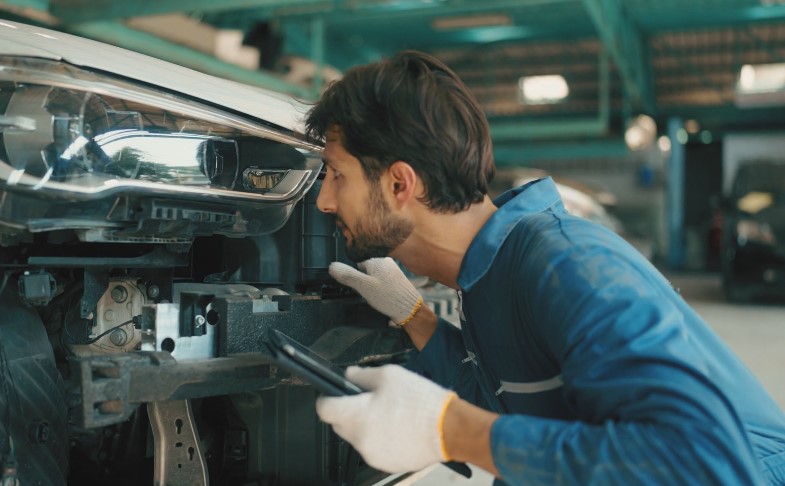
Share Post:
Buying a car should be a moment of excitement, but it can quickly turn into frustration when persistent defects appear.
Consumers often face major obstacles in getting issues resolved, especially when dealing with manufacturers or dealerships reluctant to take responsibility.
Legal protections exist for such situations, and they are designed to ensure consumers aren’t stuck with vehicles that fall short in performance, safety, or reliability.
Laws vary by region, but many provide clear pathways to help buyers take action and seek proper compensation or remedies.
Evaluating If Your Car Qualifies

Before filing any legal claim for a defective vehicle, it’s essential to assess if the situation meets specific criteria under consumer protection laws.
Not every malfunction or inconvenience is grounds for a case.
Legal protections are usually triggered only when the issue is severe, unresolved after multiple repair attempts, and falls within a defined timeframe.
Here, three core factors are examined:
- The nature of the defect
- Repair and downtime history
- Legal timing limits
Identifying Serious Defects
Only major defects typically qualify under lemon laws or similar protections.
These problems must significantly impact the vehicle’s performance, safety, or market value.
Common examples of qualifying defects include:
- Brake system failures
- Transmission or engine breakdowns
- Malfunctioning airbags or seatbelt systems
- Electrical failures affecting critical systems
- Steering or suspension defects affecting drivability
Non-qualifying issues generally include:
- Peeling paint or scratched surfaces
- Faulty interior lighting or broken cup holders
- Rattles or squeaks that don’t affect function
- Infotainment system glitches
Repair Attempts and Downtime

Repeated repair efforts that fail to resolve the issue show that the problem is not only serious but also persistent. Laws vary, but a general rule is that a vehicle must go through several unsuccessful repairs for the same problem before legal action becomes valid.
Key thresholds that often trigger eligibility include:
- At least three to four repair attempts for the same issue
- At least two repair attempts for problems that pose an immediate safety risk
- Vehicle out of service for 30 or more cumulative days within 12 months
Each of these conditions helps build a case by proving the defect is not being adequately addressed, despite reasonable opportunities to fix it.
Timeframe Considerations
Legal protections are not open-ended. Filing a claim must fall within a limited window, both in terms of time and mileage.
Acting quickly helps preserve rights and eases the burden of proving the issue existed early on.
Typical timeframe limitations may include:
- Claims are valid within the first 12 to 24 months of vehicle ownership
- Mileage caps such as 12,000 or 24,000 miles, depending on the jurisdiction
- Statutes of limitation that vary between one and four years, based on state law
Once this window closes, consumers may still pursue action, but the process becomes more difficult.
Proof of early defect emergence becomes crucial, and the burden often shifts entirely to the owner to show that the issue wasn’t caused by wear and tear or owner misuse.
Steps to Take if You Suspect a Defect

Discovering that a recently purchased car might be defective creates stress, confusion, and a sense of urgency.
Taking structured action early increases the chance of a favorable outcome.
Vehicle owners who suspect a defect should follow a step-by-step approach to preserve their rights and support any future legal or warranty claims.
Document Everything
Accurate documentation can be the difference between a successful claim and a dismissed complaint.
Organized records allow you to present a complete history of the defect and repair attempts. Without proof, claims often fall apart under scrutiny.
Essential records to maintain:
- A written log of all problems as they occur, including date, time, and symptoms
- Copies of all service reports and repair invoices
- Photos and videos showing the defect or the consequences of the issue
- Notes on vehicle performance before and after each repair
- Communication records with the service department or dealer
Every repair visit and phone call should be recorded. Keeping physical and digital copies ensures nothing gets lost over time.
Contact the Seller or Manufacturer

Reaching out to the dealership or automaker directly is often the first formal step.
Clear and respectful communication increases the chance of cooperation.
Include in your written complaint:
- Vehicle make, model, year, VIN, and mileage
- Description of the issue and how it affects driving
- Dates and details of previous repair attempts
- Request for a specific resolution (e.g., refund, replacement, additional repair)
- Your contact information and preferred response method
Letters or emails provide a clear record that verbal conversations cannot. Always follow up if no response is received within a reasonable timeframe.
Seek Independent Advice
If reasonable steps fail to bring a solution, it’s time to bring in outside help.
Third-party advisors add credibility and may uncover legal options that aren’t obvious at first glance.
Where to find assistance:
- Local or national consumer protection agencies
- Legal clinics or attorneys experienced in auto defect claims
- Arbitration programs are required under certain warranties or sales contracts
- Online forums and communities with similar cases for reference
Some legal services work on a contingency basis, meaning payment only happens if the case is successful.
Arbitration may offer a faster path to resolution without entering a courtroom.
Common Misconceptions
Many drivers hold assumptions about car defect laws that can lead to disappointment or wasted effort.
Misunderstandings about what qualifies as a lemon, how many repair attempts are necessary, or how used cars are treated can cloud judgment and delay appropriate action.
Knowing what the law actually requires helps avoid frustration. Below are several misconceptions that often confuse vehicle owners:
One issue equals a lemon
A single issue, even if it’s frustrating, rarely qualifies. Most laws require a repeated defect that impacts the vehicle’s performance, value, or safety.
Any problem is eligible
Small problems like rattles, squeaky brakes, or a faulty radio usually don’t meet the required standard. Qualifying issues need to be serious, such as transmission failure, engine overheating, or brake malfunctions.
Used cars are never covered
Some jurisdictions do offer protection for used vehicles, particularly those sold with a warranty. However, rules are often more restrictive and depend heavily on location and contract terms.
Immediate filing is always the best choice
Filing a claim too early without sufficient repair attempts can lead to rejection. Documentation of repeated, failed repairs is critical.
Clarity around these points improves the chances of making a valid claim and prevents wasted time.
When to Consider Legal Action
View this post on Instagram
A post shared by Loyd J Bourgeois Injury & Accident Lawyer (@loydjbourgeois)
Legal action shouldn’t be the first step, but there are clear signs that it may become necessary.
When repeated repair attempts fail and communication with the manufacturer or dealer leads nowhere, escalation is justified.
Before making that decision, certain conditions help determine if the time is right to pursue legal support. In case you need any help with this, visit ConsumerShield.
These key indicators often signal a need to act:
- Multiple failed repair attempts with no resolution
- Vehicle remains out of service for extended periods
- Written complaints are ignored or dismissed
- Safety-related defects are not addressed properly
- Full vehicle replacement
- Refund of the purchase price
- Reimbursement for repair costs, towing, and rental cars
- Coverage of attorney fees and court costs, if awarded
Legal support plays a major role in gathering evidence, filing claims correctly, and negotiating with resistant parties.
Acting without legal guidance can weaken the claim or lead to missed deadlines. A structured approach backed by records and legal help increases the likelihood of success.
Summary
Car defects can create a spiral of frustration, but drivers are not powerless.
Acting early, keeping thorough records, and reaching out for guidance can make all the difference. Laws exist to protect buyers and hold automakers accountable.
Using those protections can turn a bad situation into a fair outcome.
Related Posts:









